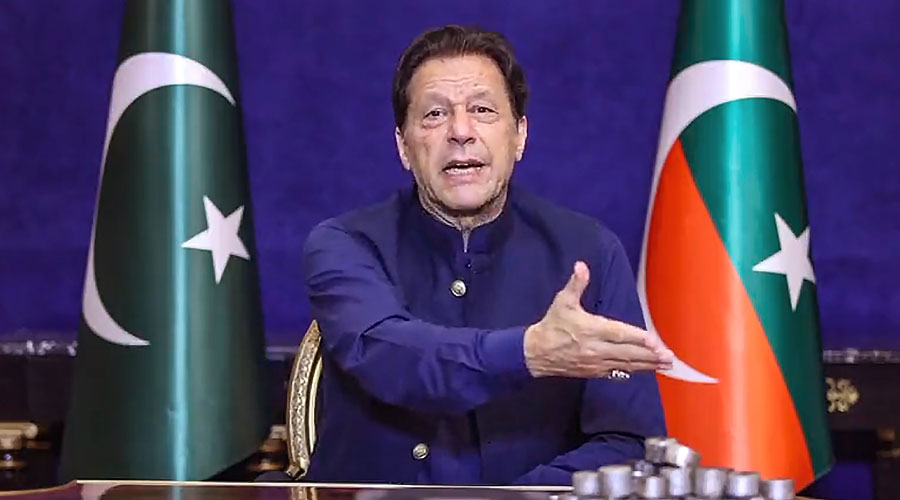Uganda’s parliament is set to debate a new anti-gay bill next week, as the country’s president called for a “medical opinion” on the deviancy of homosexuals. The bill, besides criminalizing homosexuality, also criminalizes the “promotion” and “abetting” of homosexuality and follows a January parliamentary investigation into an alleged promotion of homosexuality in schools. It’s no surprise, given how rampant anti-gay sentiment is in the country.
In September, I came across a video that was going viral on Twitter in Uganda. In the video, 26-year-old Elisha Mukisa, who is reported to have been previously imprisoned on defilement charges, speaks for a little over eight minutes detailing how he was lured as a minor into acting in gay porn by Sexual Minorities Uganda (SMUG)—a nongovernmental organization (NGO) based in Kampala working to support and defend LGBTQ+ persons in the country.
The video caught my attention for several reasons. The first was the anti-gay rhetoric it catalyzed in the following days and the corresponding moral panic. In the ensuing conversation on social media, SMUG was defined as a threat to children that parents had to watch out for. One Twitter user, @Ashernamanya, wrote: “Uganda must be for God Almighty not for Bum lickers the Gays. SMUG an NGO is recruiting young children into Homosexuality and acting the gay. They need to be arrested.”
The previous month, the Ugandan government had shut down the organization. The country’s NGO board released a statement after the announcement, claiming that SMUG’s registration was rejected for being “undesirable.” Mukisa alleged in this video that the shutdown was because of evidence he had provided to the NGO board.
The second reason the video kindled my interest was that it added to the growing list of instances of mass media being weaponized in Uganda to propagate the “ex-gay” narrative, in which a person claims to have been “lured” and “recruited” into homosexuality. It was also organized by the Family Life Network’s Stephen Langa, who in March 2009 put together a similar seminar called “Exposing the Homosexuals’ Agenda.” The language and presentation of luring and recruitment (as though it were a job listing) were not, in fact, novel to my ears, and it is a phenomenon I have seen across African news media.
It has deep links to white evangelical Christianity and is an export of a made-in-the-USA movement and ideology that is polarizing African countries and harming and endangering LGBTQ+ people.
While it looked innovative, it was not the first time such a press conference was creatively planned to spark panic and parade out a person claiming to be ex-gay. It was also not peculiar to Uganda; it is a method that was and continues to be used in both puritanical and evangelical Christianity in countries from Ghana to Kenya and Nigeria.
From the days of European colonialism, when sodomy warranted the death penalty, the church has been the face of the anti-LGBTQ+ movement and has deployed language and framing consistent with present-day ex-gay movements.
The rhetoric relies on a “prodigal son” framing that checks out with the Bible, in which gay people are only valid as long as they turn away from their sexuality. (In the Bible story, the prodigal son’s welcome was contingent on his return in the same way the evangelical church would only welcome gay people on account of their conversion.)
When the pro-conversion therapy Christian group Exodus International put Yvette Cantu Schneider and other ex-gay spokespeople on TV in the 2000s to talk about being formerly gay, it was because of such beliefs. Schneider herself wrote on Instagram that a straight white male leadership team handpicked her. (Exodus International ceased operating in 2013.)
The post reads in part: “They were looking for a spokesperson who had been gay. And I was told, ‘you’re gonna be great because you’re young, you have the Hispanic last name, and you don’t look gay.’”
This same belief seemed to spawn the Mukisa video, the homosexual recruitment press conference, and other such events. The prodigal son parable has propped up the ex-gay movement in Uganda, ensuring there are open arms to gay people who can speak about previously being in that life of “sin” and denounce their gayness publicly. It seems that as the ex-gay movement lost its grip in the United States, it started to reach for relevance elsewhere.
In 2009, George Oundo, whom news reports described as a former trans woman and LGBT activist, went on a media tirade in Uganda on how they got initiated into homosexuality at 12 years old. Oundo said in a TV interview that they “recruited many, many boys in Jinja”—a town in southeast Uganda. They also published a book titled My Long Journey to Victory: Bound by the Chains of Homosexuality.
In 2018, Val Kalende, an LGBTQ+ rights activist who even went on a U.S. State Department-sponsored tour in 2010 for her activism, went on TV during a church service to renounce lesbianism. Kalende in 2022 wrote an op-ed titled “Unchanged: A lesbian Christian’s journey through ‘ex-gay’ life,” in which she apologized to Uganda’s LGBTQ+ community for her renunciation.
The church has been involved in manufacturing and sustaining the ex-gay framework in more than subtle and metaphorical ways. Evangelical preachers have traveled across Africa, verbalizing this harmful language.
In the early 2000s, American evangelical Scott Lively was part of a series of anti-gay events that culminated in Uganda’s 2009 “Kill the gays” bill, which called for the death penalty for what it described as “aggravated homosexuality.” Lively had written books such as The Pink Swastika: Homosexuality in the Nazi Party and Seven Steps to Recruit-Proof Your Child against what he described as “pro-homosexual indoctrination.” The bill—which Lively opposed as too harsh—was introduced after Lively spoke at the March 2009 conference organized by Langa that hosted U.S. representatives of the ex-gay movement.
On that same trip and speaking at the same conference as Lively were evangelicals Caleb Lee Brundidge, who said he was formerly gay, and Exodus International board member Don Schmierer. Schmierer spoke on a lack of good upbringing as a cause of homosexuality and was quoted as saying that 56 percent of homosexuals experienced abuse as children, which turned them into homosexuals.
Following that conference, Lively also spoke to the Ugandan Parliament, where he framed homosexuality as a Western import intending to spread “the disease” to children.
This recasting of homosexuality as akin to pedophilia, alongside the widespread use of similar language, is meant to legitimize the response and crackdown by governments and institutions. If gay people are not successfully framed as predators, then extreme measures against them could be questioned. However, the violence that LGBTQ+ people experience in Africa has been justified by these anti-gay groups through the construction of a narrative of intent by “them” to target children.
That same rhetoric drawing connections between homosexuality and pedophilia has remained largely unchanged from how evangelicals created panic around gay people in the early days of the anti-gay movement. In a 1981 letter, U.S. preacher Jerry Falwell described gay people as out to “recruit,” saying “many of them are out after my children and your children” and that they “must not be recruited to a profane lifestyle.” Falwell also added that gay people threatened families because they didn’t reproduce.
It is similar to the rhetoric of individuals such as Peter LaBarbera, who in 2007 falsely claimed that there was “a disproportionate incidence of pedophilia” among gay men.
These comments on recruitment, destruction, and being a threat to families now cloud much of the discourse around homosexuality in several African countries. They were present in the Mukisa press conference, are currently in use as Ghana’s Parliament debates a draconian anti-gay bill, and continue to swirl across the anti-LGBTQ+ movement on the continent. In an African context, visits and speeches from prominent Americans such as Lively and Falwell have the effect of legitimizing homophobia; their straight white male identities crown it with credibility.
I do not mean to exonerate Uganda, Ghana, or other African countries of homophobia or suggest that they are incapable of it without external backing. They are.
Even though LGBTQ+ identities had existed in Africa since before colonialism, their existence was not always welcomed and tolerated. For instance, while homosexuality to the Zande people in South Sudan was indigenous and commonplace, they were harsher on women; lesbianism was considered witchcraft and could even warrant execution.
Abrahamic religions have exacerbated homophobia, and it might have become prevalent on the continent without U.S. evangelical backing. This trend is clearest in Senegal, a majority-Muslim country, where the capital, Dakar, used to be considered Africa’s “gay capital” but is now experiencing rising homophobia. Just last year, protesters lined the streets of Dakar demanding stricter laws and longer prison sentences for gay people in the country.
However, claiming that homosexuality is uniquely Western offers the United States’ ex-gay movement the opportunity to present itself as being on the right side of history, as being close to the sources of “moral decadence” but still resisting it. For Ugandan and African homophobes, the reverse is the case. It gives them a premise for absolution—an anticolonial veneer that allows them to say, “This was brought here from abroad, and we need to eradicate it.”
Proponents of ex-gay and anti-gay philosophies depend on the permanence of gay people for their message to be relevant. They require an enemy for their fight to be valid, and they go to great lengths to construct this enemy as a well-funded and all-powerful foreign movement while falsely presenting the local anti-gay movement as a grassroots underdog, despite its heavy reliance on U.S. evangelicals for publicity.






